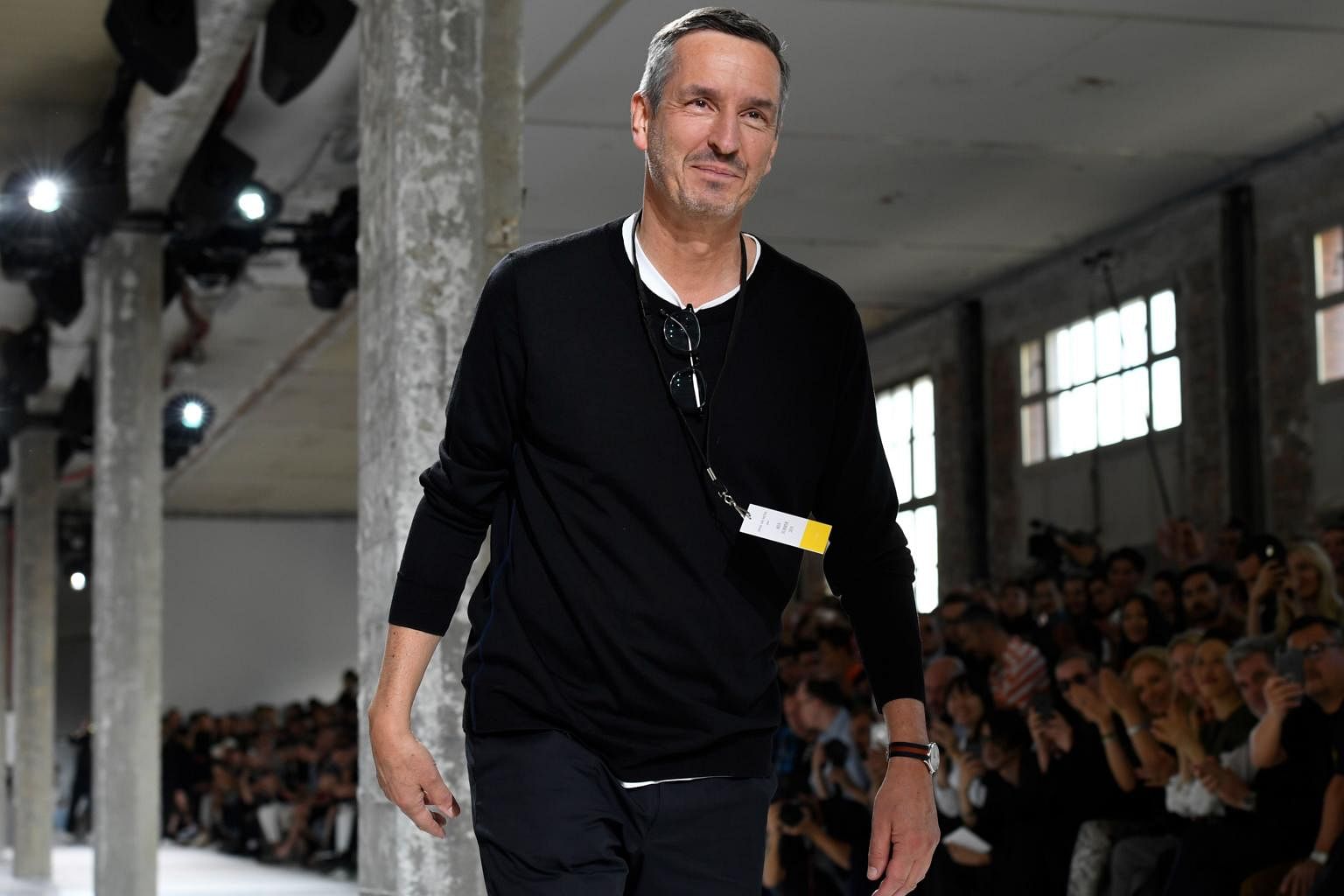A season for change in fashion - over 500 industry players sign letter calling for transformation
Sign up now: Get ST's newsletters delivered to your inbox

Belgian designer Dries Van Noten at his men's Spring/Summer 2019 collection fashion show in Paris.
PHOTO: AFP
Gordon Ng
Follow topic:
SINGAPORE - Change is on the horizon for the fashion industry, incited largely by the absence of regularity and normalcy during this time of global pandemic.
Designers, brands and retailers the world over have basically been on pause since February, when it became apparent that the coronavirus situation was not going to be simply swept away.
Most recently, a group of fashion industry players, led publicly by the Belgian designer Dries Van Noten, came together to put forward an "Open Letter to the Fashion Industry". The letter outlines a clear intent: "to discuss ways in which our business needs to transform".
The main way this is to be achieved is by realigning the seasonal flow of goods and selling seasons. Currently, fall/winter collections begin deliveries in July and spring/summer ones in January.
The proposed change would see deliveries for both seasons moved a month later, to August and February respectively.
The change may be a mere month, but the effects are potentially large for fashion businesses. August and February would align selling months more closely with actual, real-world seasons, meaning products reach consumers at more weather appropriate times. Discount seasons, which typically run in the last months of each cycle, will be changed to January and July. This means that designers' collections have more time on store floors to sell at full retail prices.
The seasonal appropriateness also opens up a larger window for retailers to provide staggered deliveries and releases of products, ensuring a consistent flow of newness. That could serve to stoke and better maintain consumer desire and interest.
This is particularly important for the high fashion segment of the industry, which has in recent years come to treat mainline collections - spring/summer and fall/winter - as marketing exercises rather than selling opportunities.
The reality is that brands these days are producing pre-collections, interseasonal lines commonly named cruise and resort, that make up the bulk of merchandise actually produced for selling.
Pre-collections are very often simplified and more commercially palatable versions of designer collections that have an actual life in stores.
The problem is that what you see on the runways and in fashion shows end their life cycles as samples, meant to be photographed and worn by celebrities. The real product available to consumers ends up being an entirely different matter.
Van Noten is perhaps the designer best poised to make this bold proposal. Dries Van Noten has been, until recently, one of the industry's very few successful privately owned companies.
The designer is notable for forgoing pre-collections altogether, instead staggering the deliveries of the two main seasonal collections he produces each year for men's and womenswear.
Ready-to-wear is also an uncommonly large portion and focus of Van Noten's business - one that does not rely on accessories or fragrance, cosmetics and eyewear licences to make up the bulk of profits.
There is irony, of course, in the way that Van Noten's business model, built around fashion itself, is an exception in an industry that is supposedly about clothing.
This could have the effect of putting greater emphasis industrywide on reducing waste - make less, but make better. It would force designers to create mainline collections that do well editorially on the runway and in the pages of magazines, as well as in stores.
Gucci is one brand that has made a subtle but significant move in this direction. The brand saw major leadership change in 2015 when it promoted the designer Alessandro Michele to creative director and welcomed Marco Bizzarri as chief executive officer.
Michele's success as a designer has been to create a bold and distinct visual language and style for the brand. Bizzarri's success has been to shift the company's retail strategy so that it actually produces and sells the runway designs in stores.
Gucci saw immediate improvement in 2015, picking up from years of sluggish performance. The brand has continued to have double-digit growth and has more than doubled its revenues from around €4 billion in 2015 to €9.63 billion last year.
Industry analysts predict that the company is on track to crossing €10 billion (S$15.6 billion) in 2020, potentially usurping Louis Vuitton's position as the world's largest luxury brand.
Such a simple solution with such large benefits bears asking why the industry hadn't simply adopted it earlier?
The answer is most likely the basic instinct of inertia to change. When practices have been held for so long, they become enshrined as tradition. When traditions settle, they become prevailing standards and norms - and those grow exponentially more difficult to change the longer they are upheld.
The issues this initiative aims to address are not new. Industry insiders have complained for years about how "broken" the fashion system is, yet there has never been an opportunity like the one presented now.
To wit: When the open letter was first published, it had over 40 signatories. Today, there are 561. These span a gamut that represents a cross section of industry players: fashion brands, legacy department stores, multi-label retailers, e-commerce platforms, print and digital publications, investment funds, public relations firms and fashion schools, among others.
The most notable absences in the list are those of fashion brands owned by luxury conglomerates LVMH and Kering.
There is perhaps then a silver lining to be found during this coronavirus pandemic. In the absence of comfortable order, there is now a space for proposing that a new normal be adopted.
That the industry wants it, and has an idea of what that change looks like, is undeniable. Whether that gets instituted is another question that, like most things these days, does not yet have an answer.

